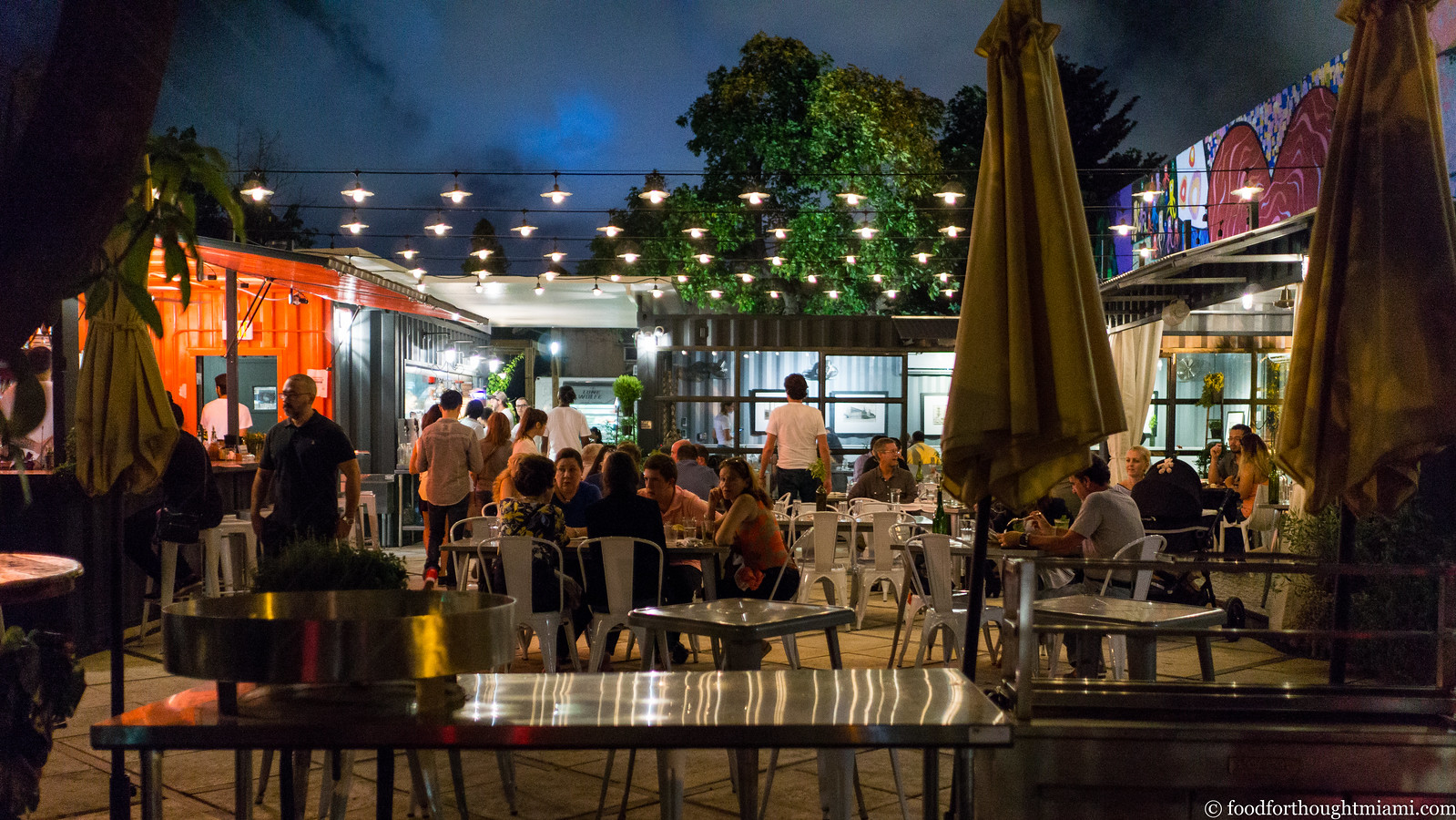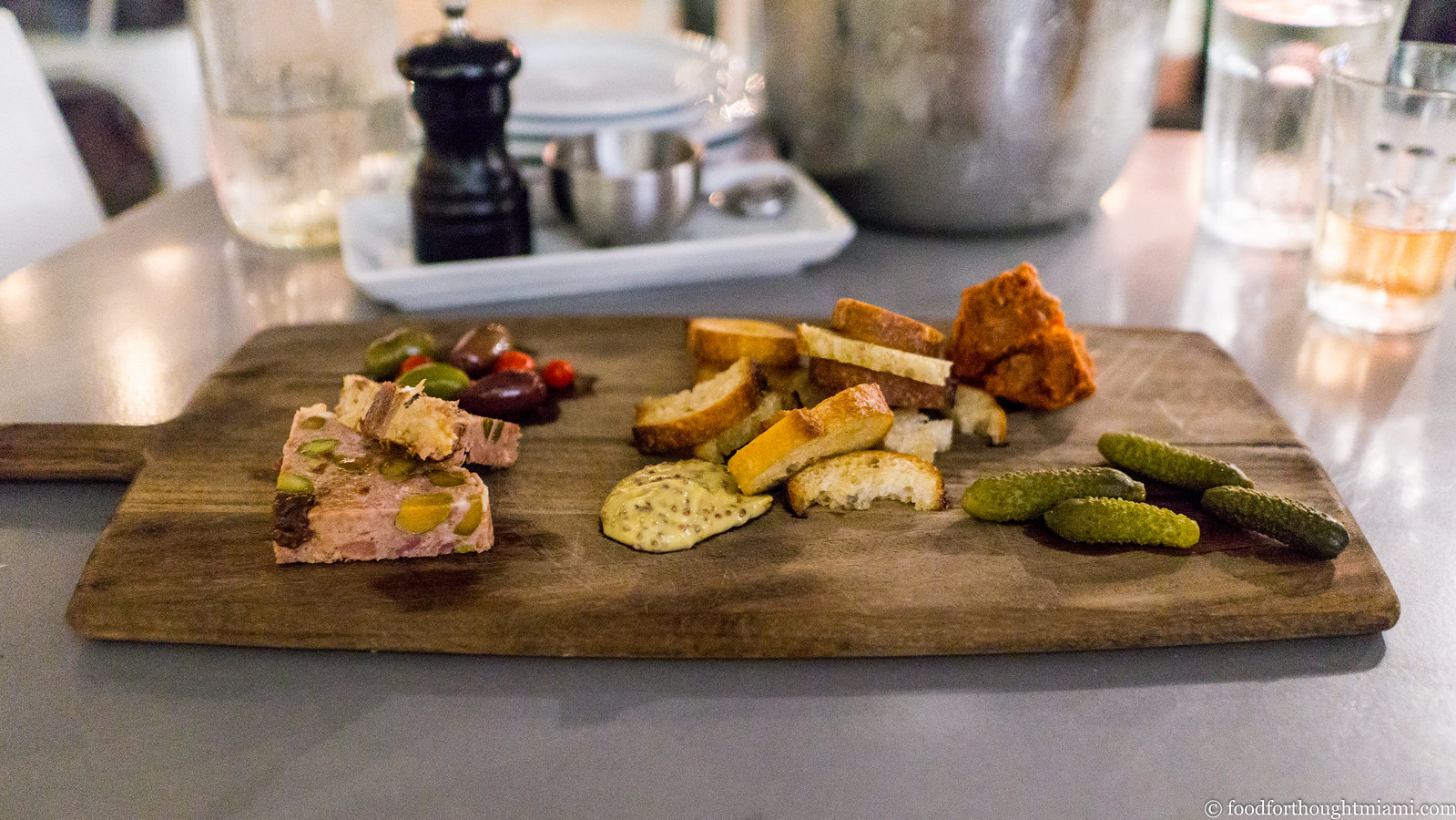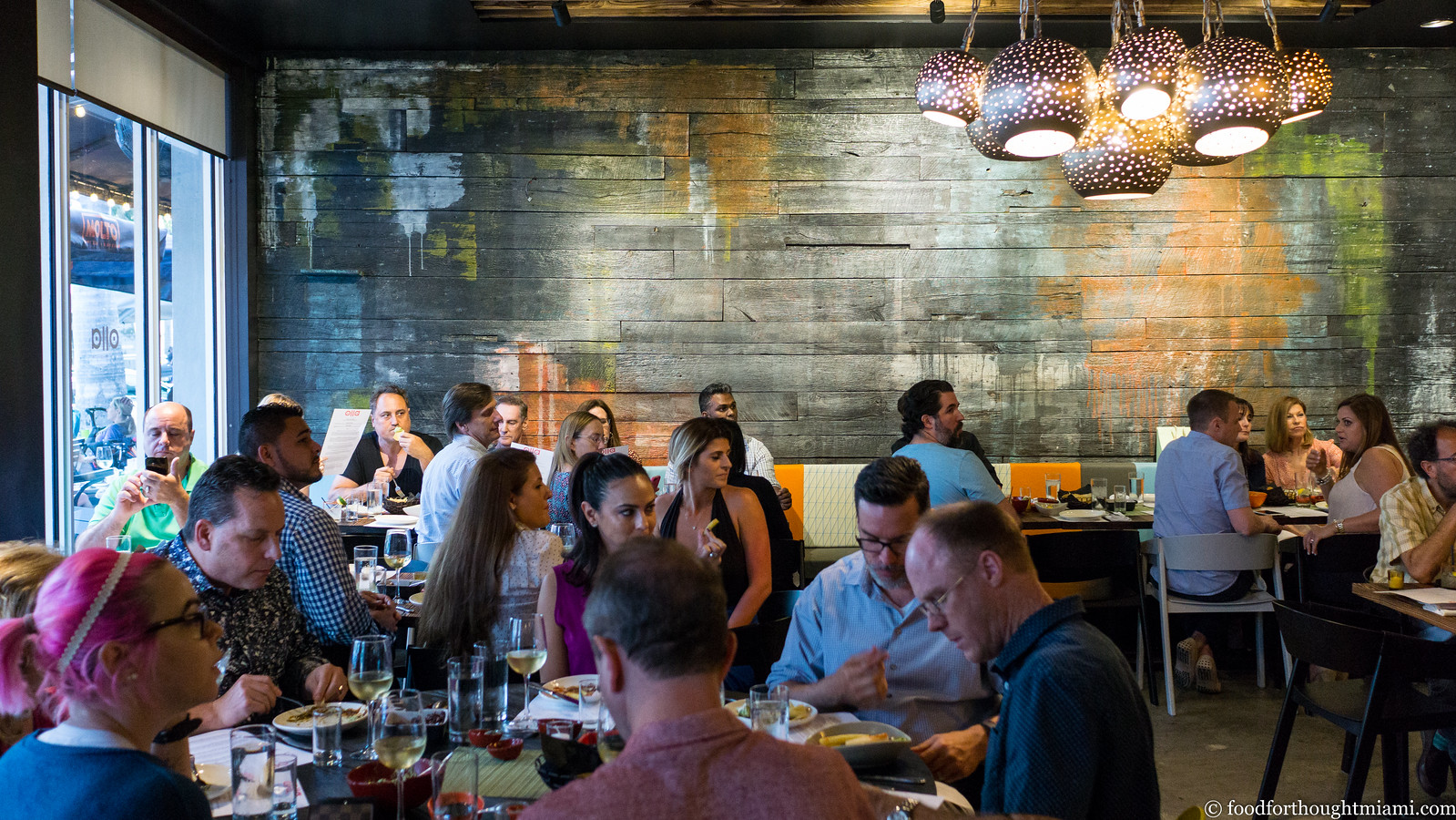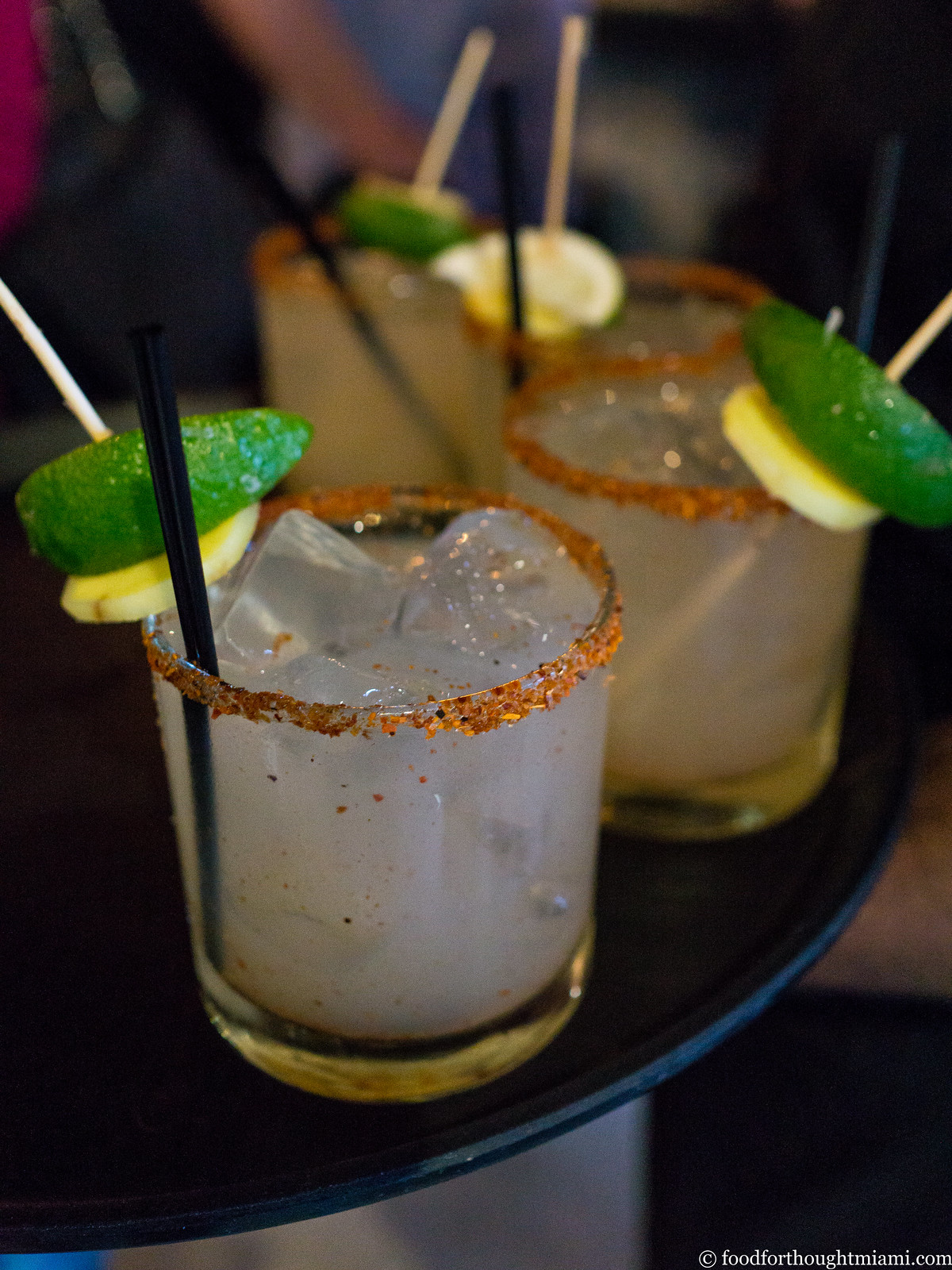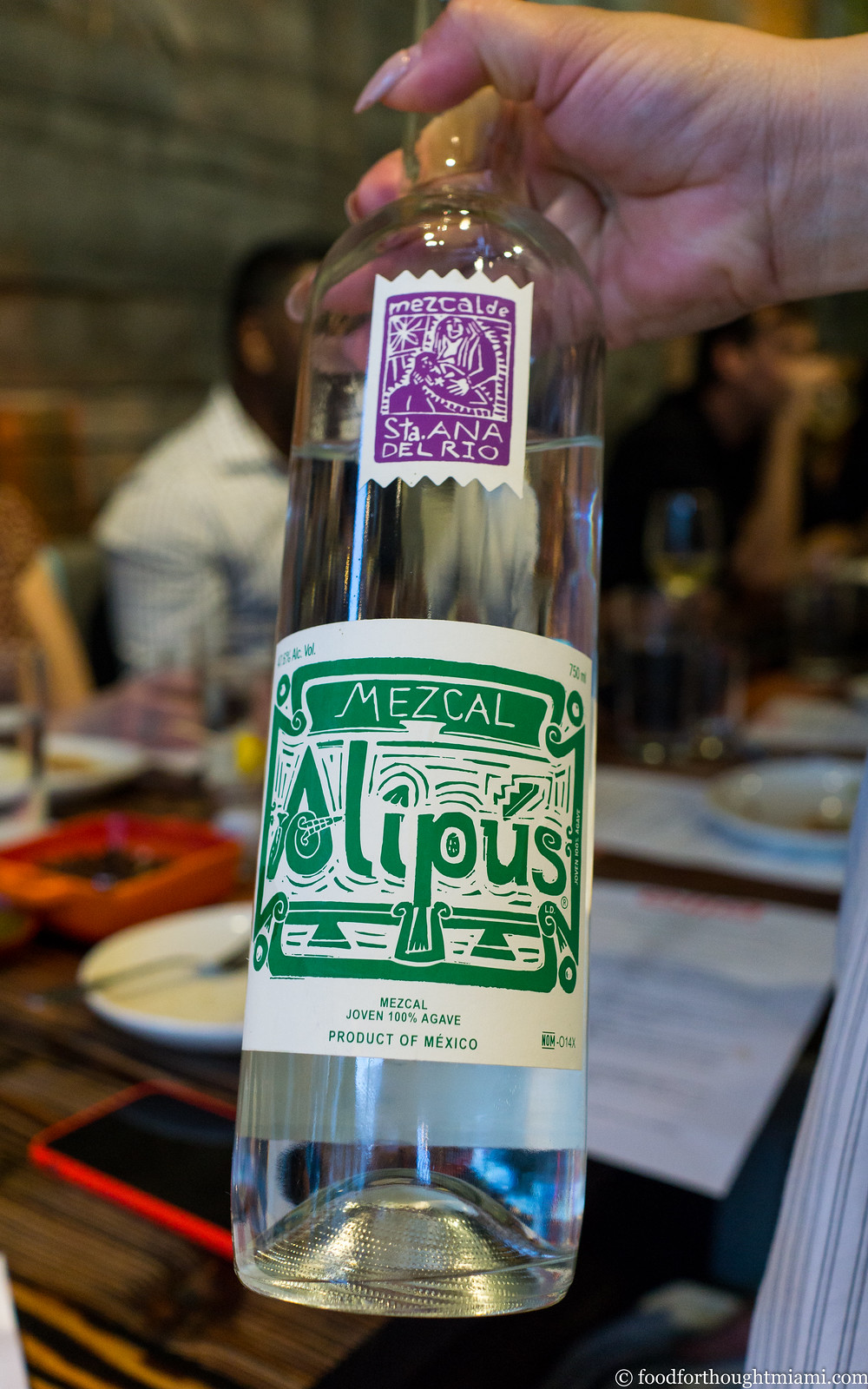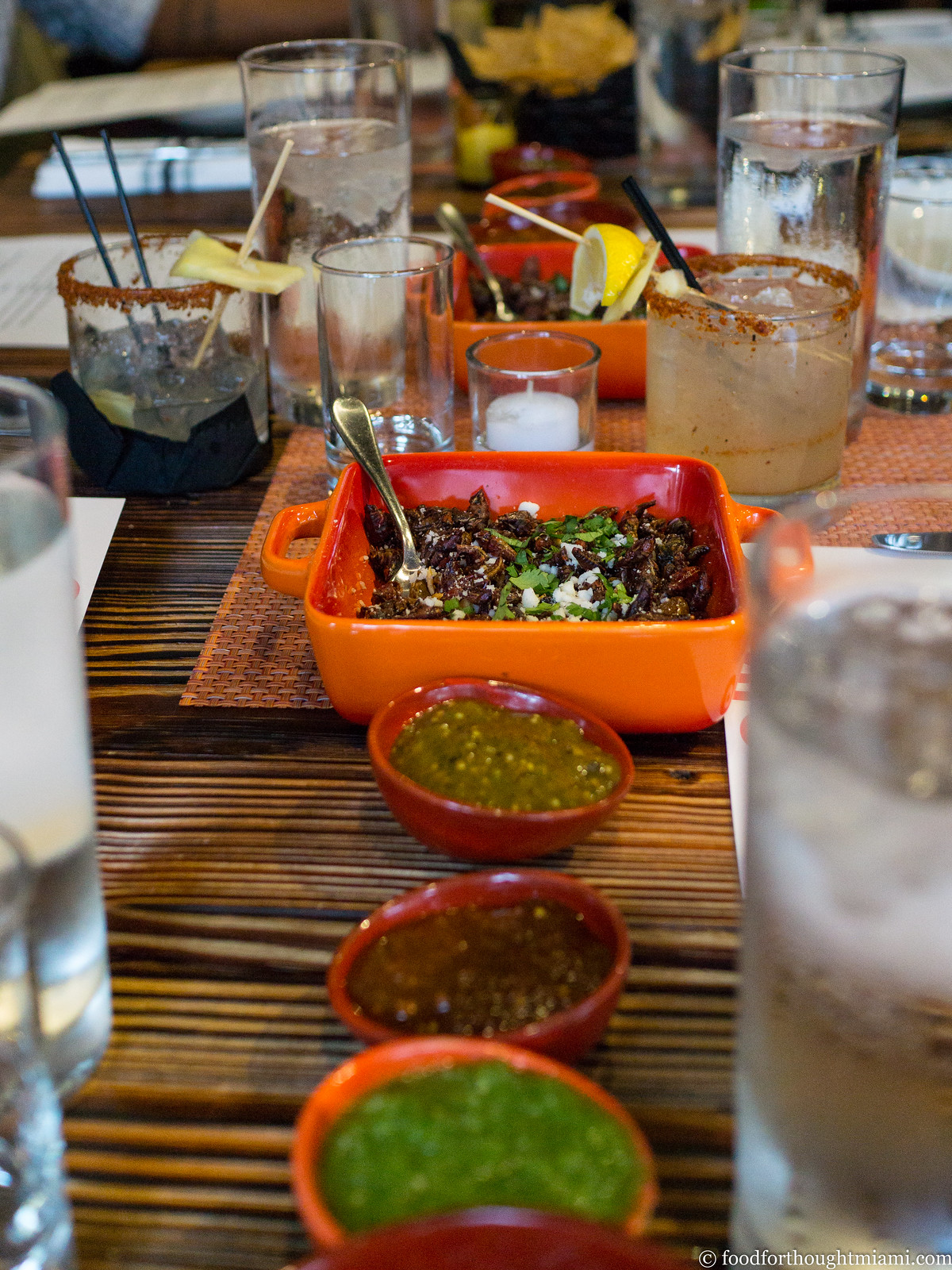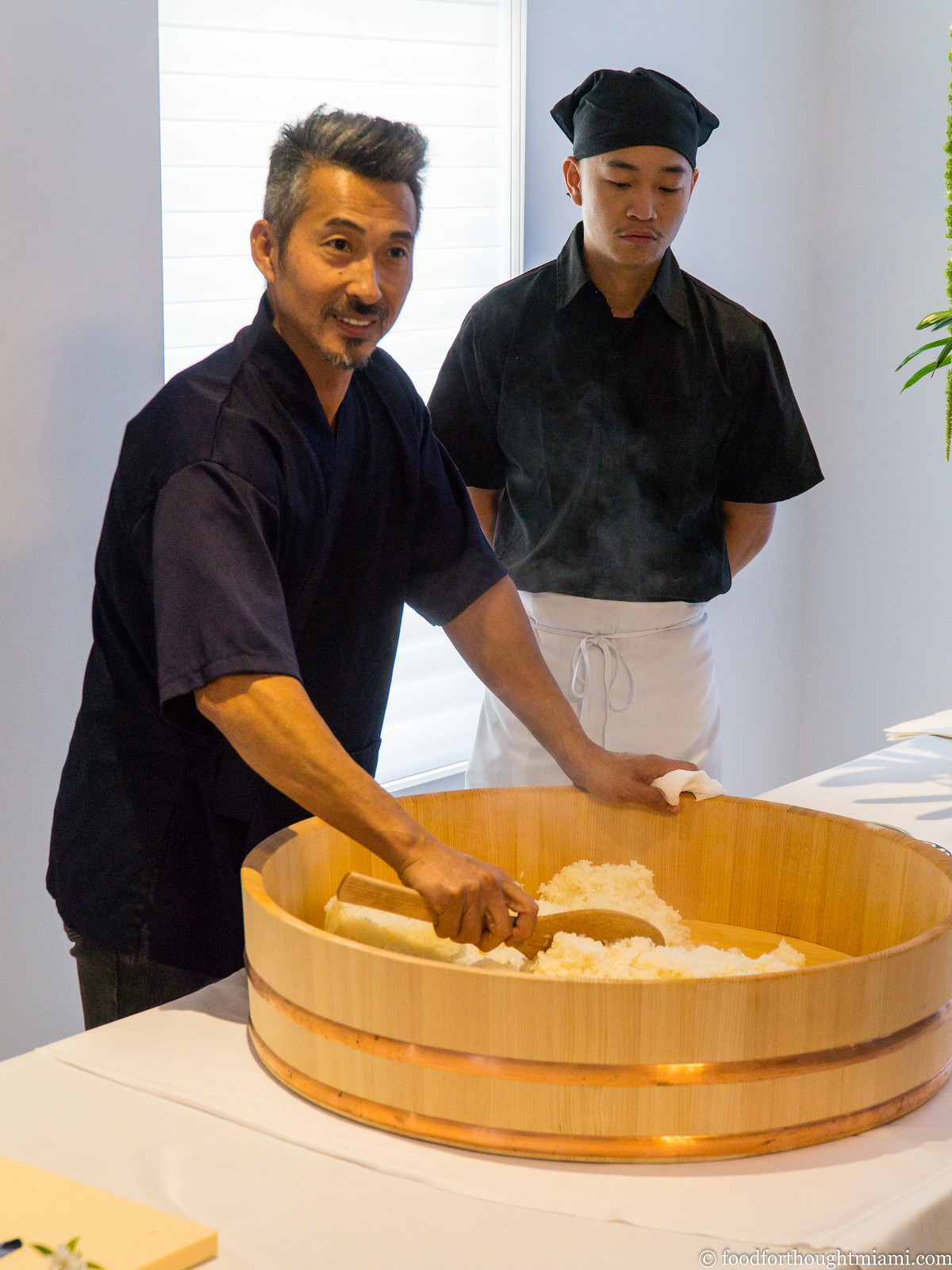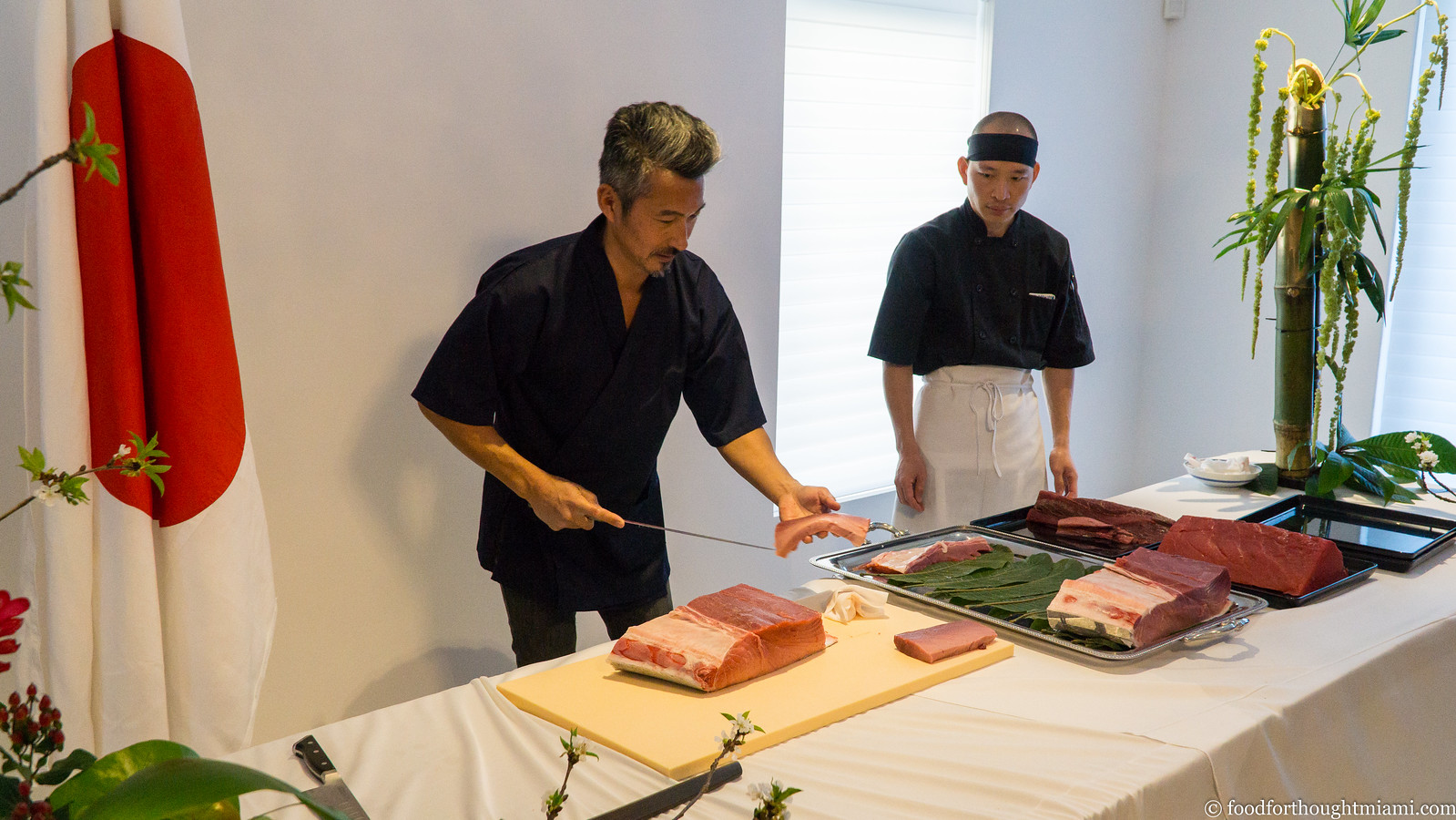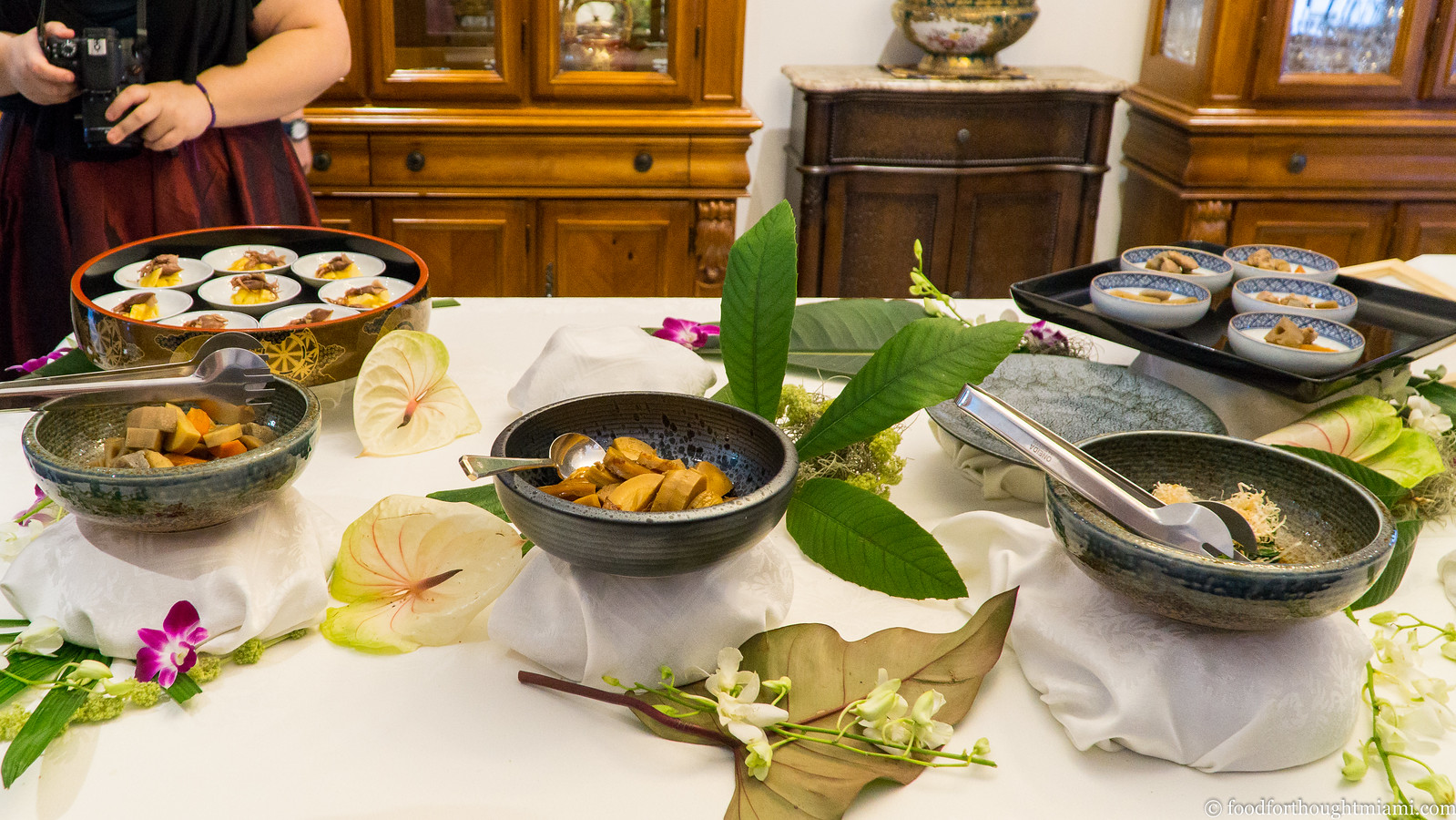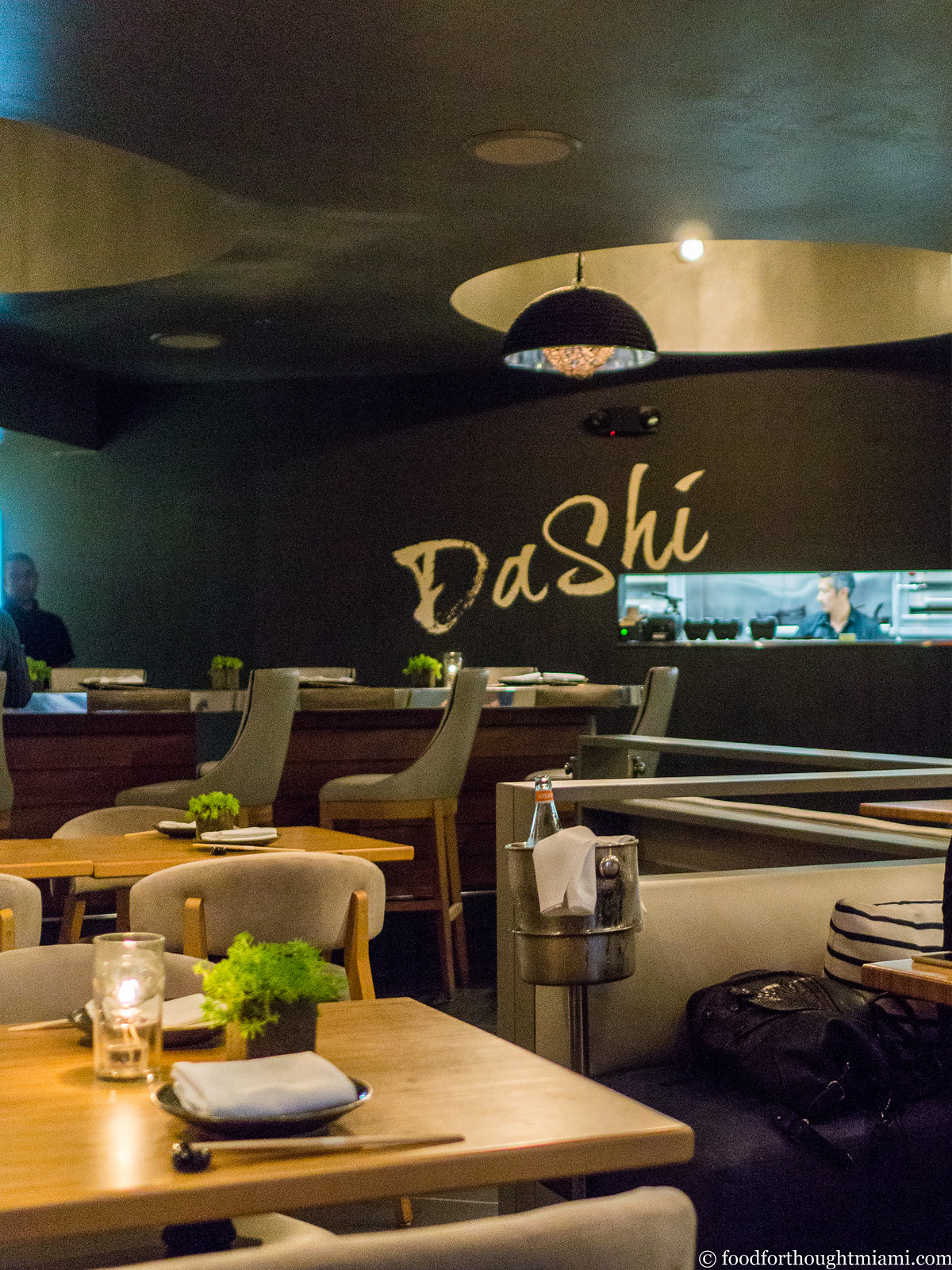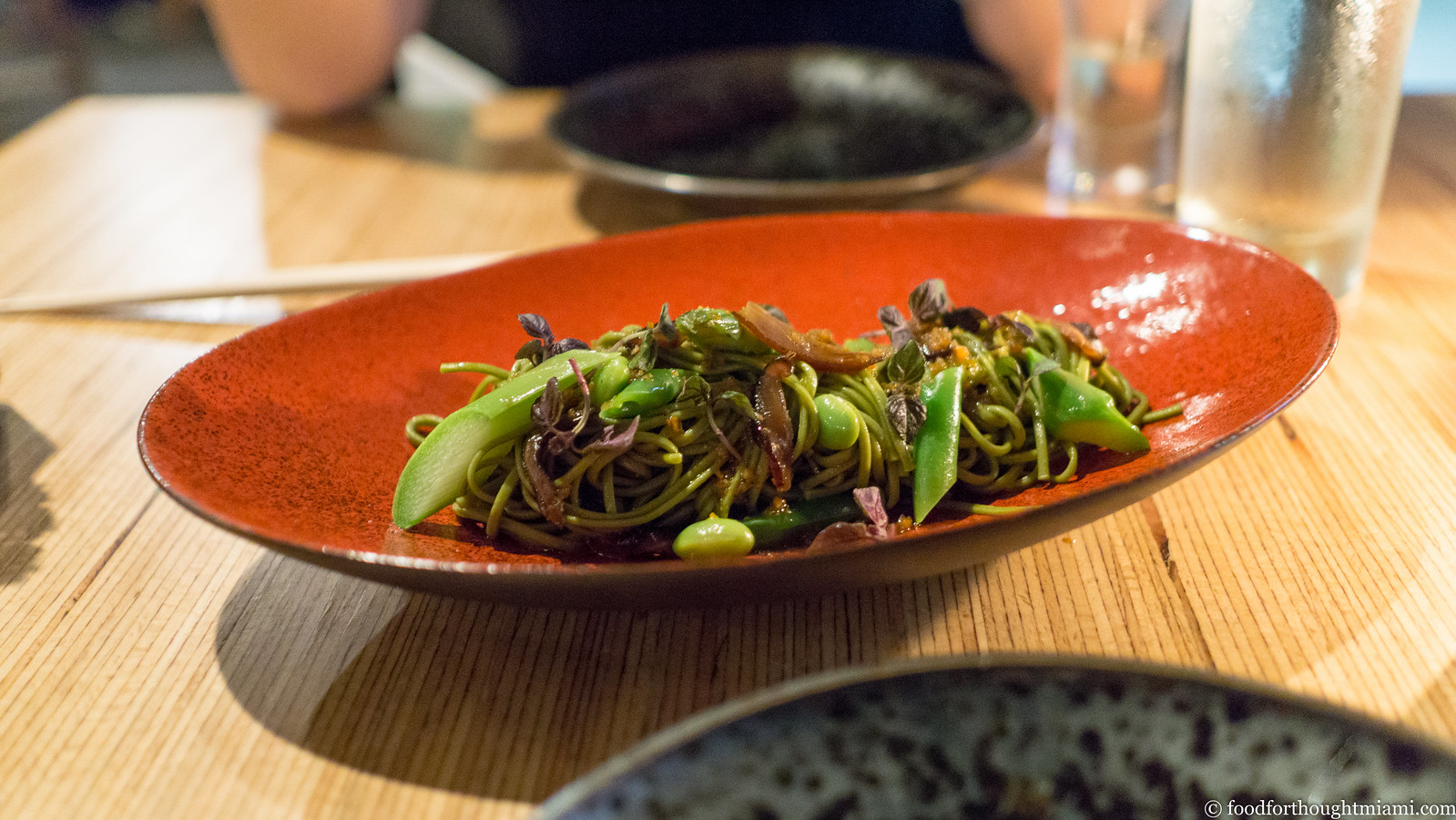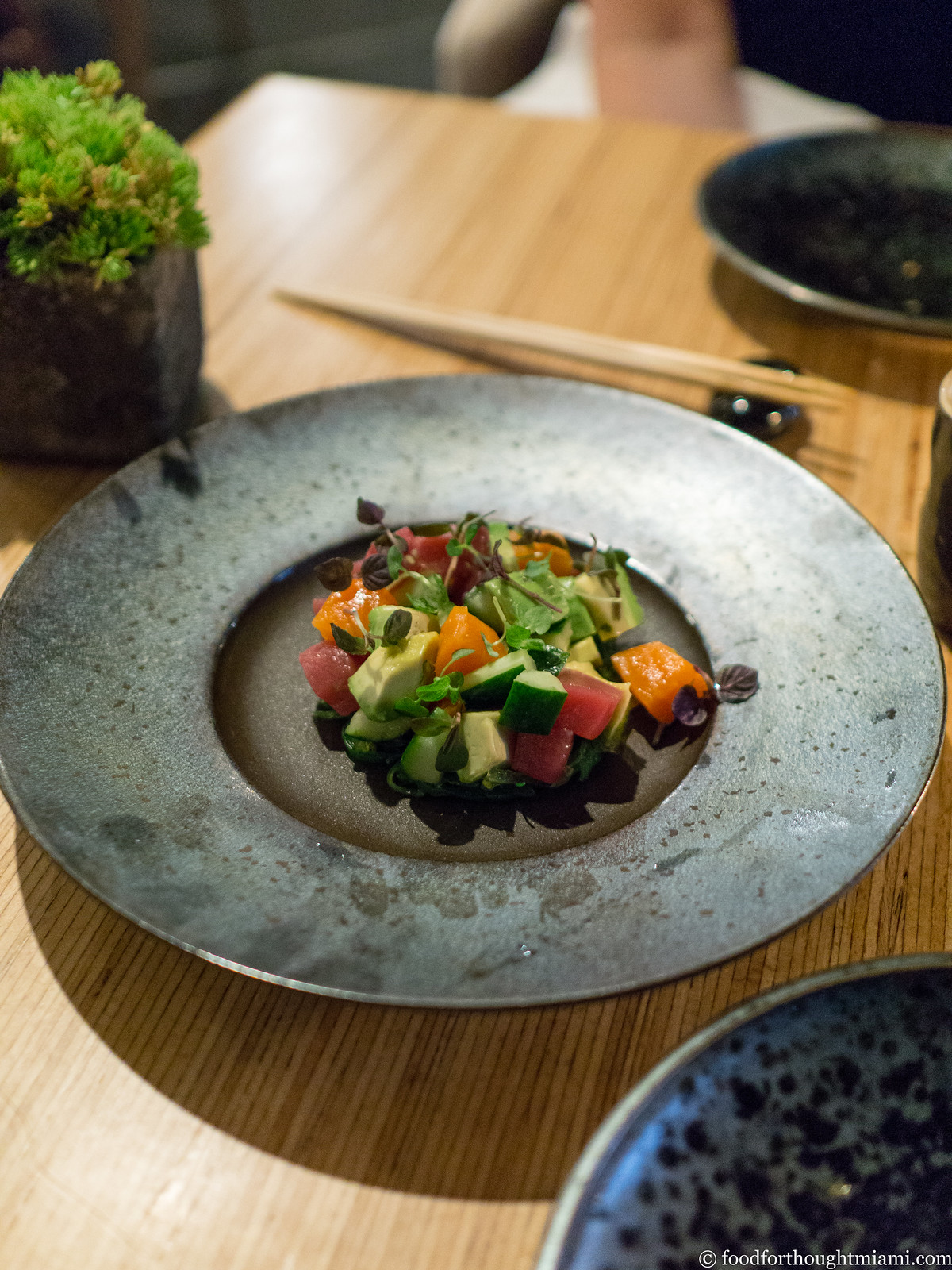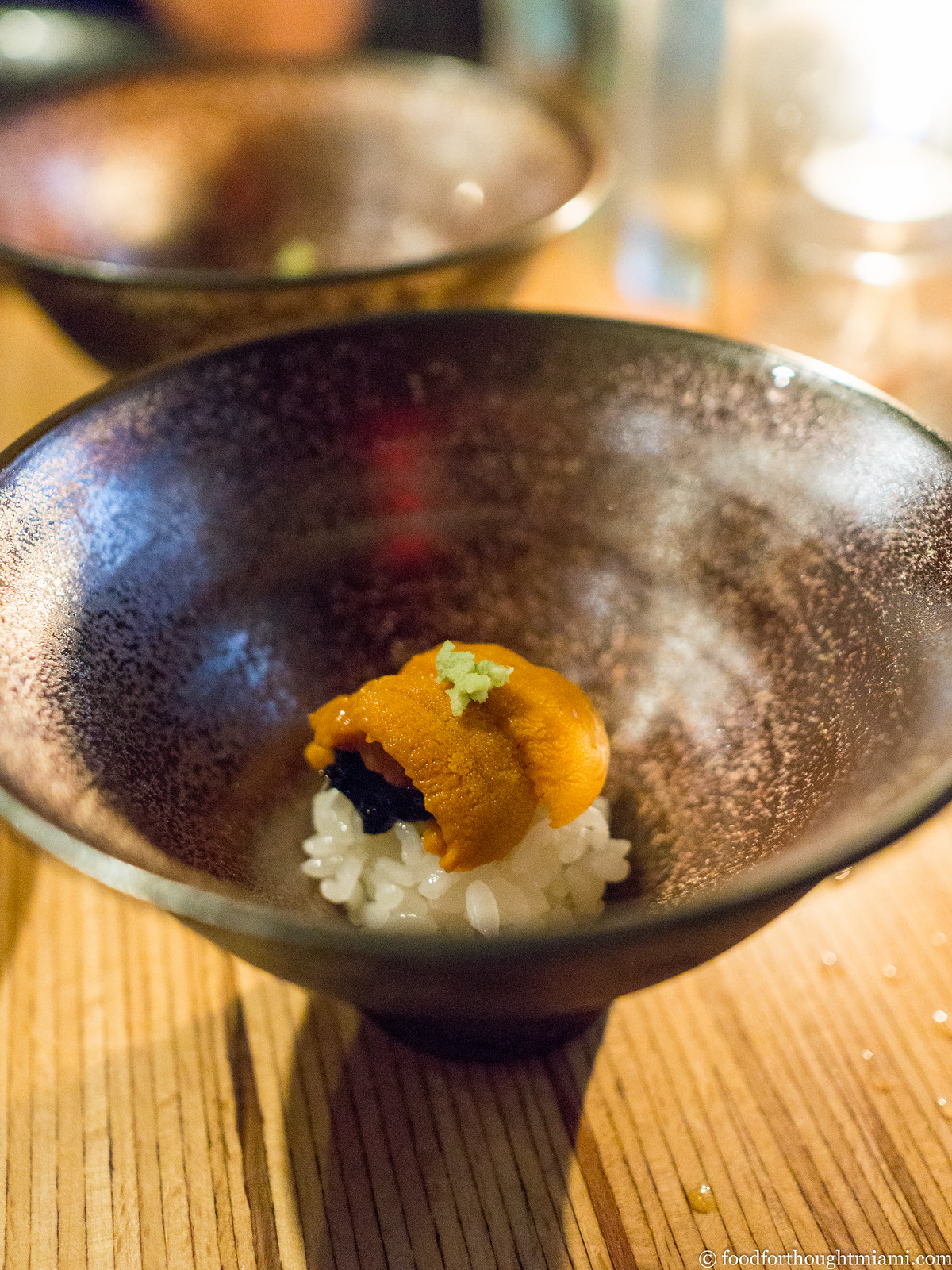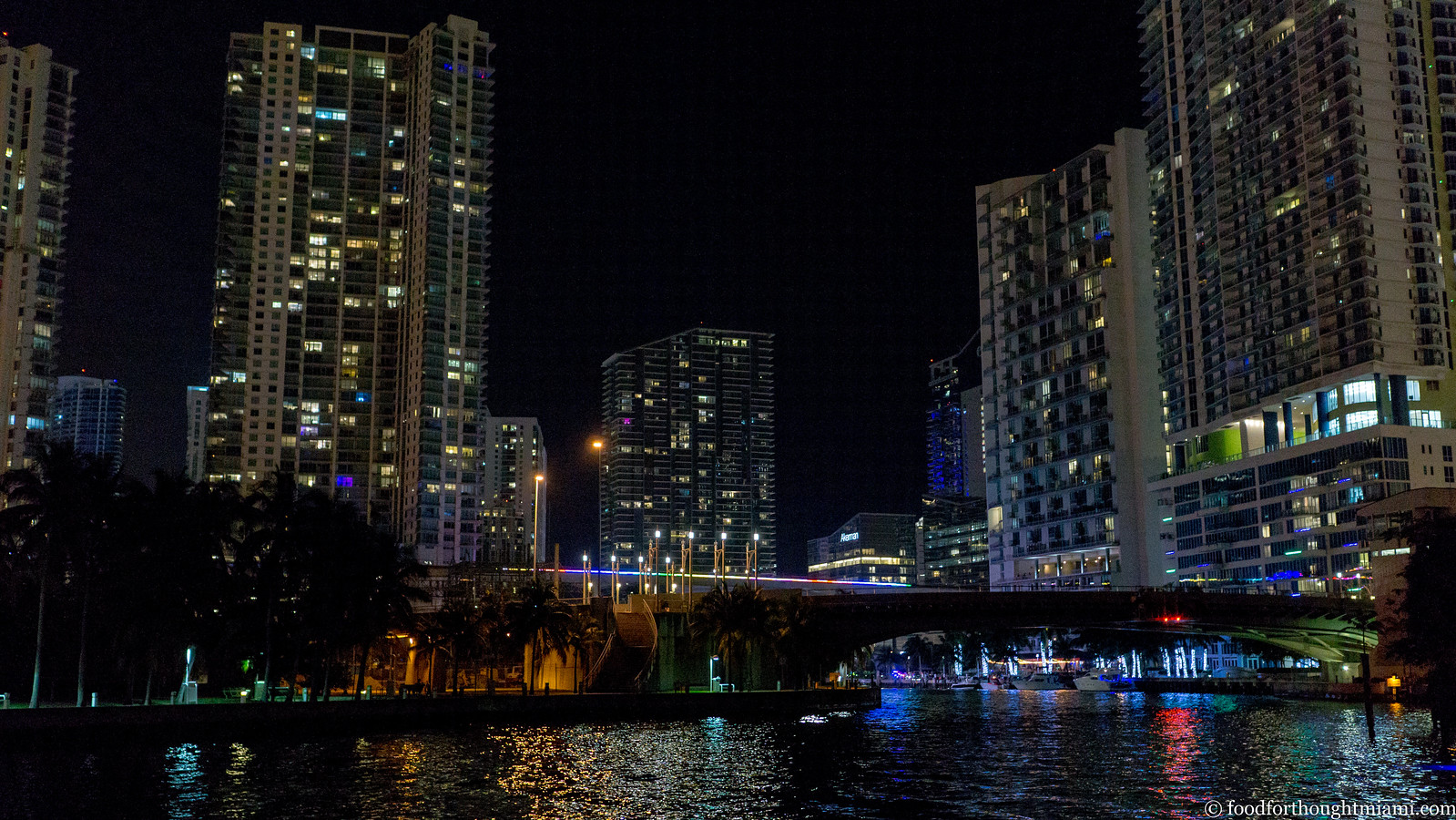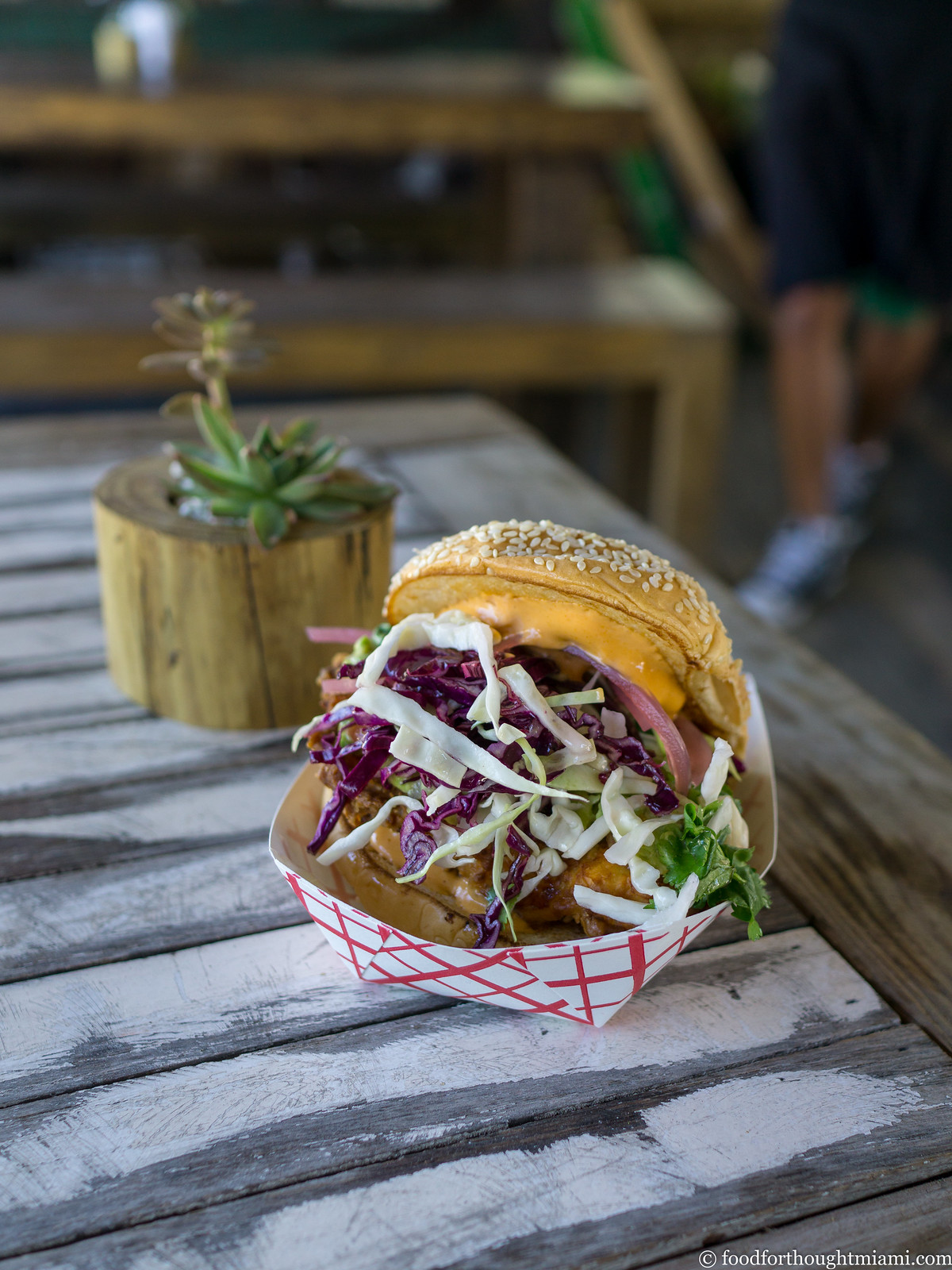Monday, May 1, 2017
first thoughts: Charcoal Garden Bar + Grill | Wynwood (Miami)
Ken Lyon is something of a grizzled veteran of the Miami dining world, one with a knack for spotting valuable restaurant real estate. He was way ahead of the curve when he opened Lyon Freres, a Franco-philic market and cafe, on Lincoln Road in the early 1990's, well before the tourists thronged and the rents skyrocketed.[1] More than a decade later, he was also one of the early pioneers of the then-sleepy Design District: in 2008, he opened Fratelli Lyon, an Italian restaurant, in the space which is now home to MC Kitchen. His jump into the Design District came not very far behind Michael's Genuine, which just celebrated its tenth anniversary.
Though Lyon's been around for a while, his latest project – Charcoal Garden Bar + Grill – is very much on-trend. It's in Wynwood. It's built entirely out of semi-portable shipping containers. And everything is cooked using a Josper charcoal grill/oven, the new favorite toy of chefs who like to play with live fire.
This time, Lyon may be a bit more of a trend-chaser than trend-setter. Wynwood has already been one of Miami's hottest restaurant neighborhoods of the past few years, elbowing its way in among South Beach and Brickell. The Josper has already made its way like wildfire (sorry) into Miami kitchens, being the theme of Deme Lomas' new Arson and a touted feature of Klima, Coya and Lightkeepers too. And while Charcoal pitches itself as the first full-service restaurant assembled from shipping containers in the U.S., I think there's at least one already in Washington DC plus a whole Container Park in Las Vegas with multiple restaurants; and of course locally, gastroPod was doing the shipping container thing two years ago, though not as a full-service restaurant.
But none of that takes away from something more important: Charcoal's a really nice restaurant. (You can see all my pictures in this Charcoal Garden Bar + Grill flickr set).
As you enter Charcoal, which occupies a corner of the Wynwood Yard multi-purpose space,[2] a cluster of containers forms a courtyard around an open patio which provides most of the seating. A cut-out container on one side offers some cover when the sun's out, while a double-wide along the back is also air-conditioned. There's a full bar to one side, behind which lies the kitchen.
The limited space and equipment of the kitchen gives the menu its focus. Starters are mostly things which require no cooking: cheeses, charcuterie, smoked fish, raw oysters. For the rest of the meal, an assortment of animals and vegetables are simply grilled or roasted using the Josper. Many of the fish and meats come from Florida waters and farms, including cuts from a whole lamb or pig brought in each week and butchered at their nearby commissary. Some of the vegetables come from an on-site garden, installed by my CSA farmer, Little River Cooperative (though probably not much these days, as the growing season is starting to peter out). You can then combine these with a choice from more than a dozen condiments, listed on a punch card. Ask nicely and you can sample more than one.
We started with some of that charcuterie. Most of it is bought-in, but one item – a pork and duck liver terrine – is made in-house. And it was very good, richly flavored but not overly heavy, and generously studded with pistachios and prunes. We coupled it with some 'nduja Americana from La Quercia, which makes a great version of the soft, spicy, smoky pork spread. There's also a really nice selection of cheeses, including some personal favorites – Point Reyes Blue, Cypress Grove Humboldt Fog, Vella Jack, Jasper Hill Harbison – which you can either order on their own or, for a small upcharge, add to the house salad which accompanies each main.
(continued ...)
Wednesday, April 26, 2017
Cobaya Olla with Chef Scott Linquist
Mexican cuisine is one of several that gets saddled with the "soft bigotry of low expectations." The common perception is that it's all chips and salsa and guacamole, tacos and burritos and fajitas, with maybe some tequila shots, mariachi bands and sombreros mixed in for good measure. In fact, it's an incredibly complex and varied cuisine, which is finally starting to get the attention it deserves in the U.S.: witness the success of Enrique Olvera's Cosme in New York, or Alex Stupak's Empellon, or places like Taco Maria and Broken Spanish in L.A., or Californios and Cala in San Francisco, or Rick Bayless' restaurant empire, plus new Chicago places like Dos Urban Cantina and Mi Tocaya. I could keep going; but instead, let me bring this back home.
Because someone is trying to help Miami catch up. At Olla, Chef Scott Linquist's new restaurant on the west end of Lincoln Road, you'll find a menu that goes well beyond the customary tropes, ambitious both in its pursuit of the authentic flavors of Mexico and in finding modern ways of presenting them. My first visit to was in December, only a week after they'd opened, and I was pretty excited by what I found. Not much later, we started to work on putting together a Cobaya dinner, which came to fruition last week.
(You can see all my pictures from the dinner in this Cobaya Olla with Chef Scott Linquist flickr set).
Everyone was welcomed with a house cocktail – a variation on the flavors of a Moscow Mule, which they dubbed the "Oaxacan Burro," featuring Alipus mezcal, a ginger and epazote shrub, a slug of ginger beer and a squeeze of lime. This was prelude to a mezcal sampling courtesy of XXI Wine and Spirits, a distributor for Alipus, which poured three different "single village" offerings. I'm becoming a real fan of mezcal, which is almost exclusively a craft, small-production product, and which can show a fascinating variety of styles and flavors – some with a clean, almost sake-like purity, others floral, or fruity, or grassy, or smoky, or all of the above.
Once our group of fifty was seated (we took over the restaurant for the night), dinner started with a round of bocadillos, or snacks.
Yes, chips and salsa. But not just any garden variety salsa: four different salsas, starting with a basic salsa fresca, and also including a fresh, raw salsa verde (with some bright, fragrant mint in addition to the usual cilantro), a deeper-flavored, charred tomatillo and habañero salsa verde, and a hearty, red brick hued version with pasilla Oaxaca chiles[1] and roasted pineapple. Plus guacamole, because yes, everyone loves guacamole.
(continued ...)
Tuesday, April 18, 2017
first thoughts: Dashi | Miami River
Last month, I had the good fortune to be invited to an event at the Japanese Consulate in Miami, extolling the virtues of washoku, or the traditional cuisine of Japan. The event was hosted by the gracious consul general, Ken Okaniwa, but the headliner was chef Shuji Hiyakawa, who provided a live-action sushi-making display.
I had a feeling we were in good hands when Chef Hiyakawa started with the preparation of the rice, noting how every component is essential to the finished product: the blend of two vinegars he uses to season the rice, the wooden bowl in which it's prepared, which retains the right amount of heat and absorbs the right amount of excess liquid, the manner in which it's mixed, so that all the grains are seasoned, and neither too starchy nor too loose.
With the rice made, he went on to break down an entire loin of bluefin tuna. Given the depleted state of the species, I really would have preferred to see just about anything else on the cutting board. I suppose between its immense popularity in Japan, and its increasing popularity here in the U.S., and many diners' lack of understanding of the different cuts sourced from the same fish – the fattiest o-toro, the medium-fatty chu-toro, and the lean maguro – I understand why they would choose this for the demo. But particularly given the traditional washoku theme, I would have been grateful for a presentation on the virtues of the many other varieties of fish and seafood that can be made into sushi. After all, the bluefin obsession is actually a relatively recent thing – in Japan, it was mostly thought of as a trash fish until the 1970's (for further reading: "From Cat Food to Sushi Counter: the Strange Rise of the Bluefin Tuna," which is mostly based on Trevor Corson's book, "The Story of Sushi").
Nonetheless, it was an informative demonstration, and even better, was followed by an assortment of prepared dishes, which were accompanied by more than a dozen Japanese sakes, none of which are currently available for distribution in the U.S.
(More pictures from the event in this Culinary Secrets of Traditional Washoku flickr set).
As it turns out, this would not be the only opportunity to try Chef Hiyakawa's handiwork; he was only weeks away from opening his own restaurant in Miami. The chef, who hails from Fukuoka, Japan (where his father had a noodle shop), came to the U.S. to work for Masaharu Morimoto at his flagship Philadelphia restaurant, where he was executive sushi chef for several years. More recently, he wound his way to South Florida, until recently working as executive sushi chef at Kuro in the Hard Rock. He's now running his own place, Dashi, in a space inside the River Yacht Club.
(You can see all my pictures in this Dashi - Miami flickr set).
While his demo at the Japanese Consulate may have focused on traditional Japanese cuisine, Chef Hiyakawa's restaurant bridges old and new. In addition to nearly two dozen sushi and sashimi options, the menu includes prepared dishes that are both traditional (wagyu beef sukiyaki) and contemporary (white fish tiradito with sudachi juice and olive oil).
We sampled a couple of these prepared dishes while awaiting our sushi order. A salad of cha-soba (green tea noodles) was speckled with edamame, batons of asparagus, and slivers of shiitake mushroom steeped in soy sauce, all napped in a lightweight but umami-loaded variation of the restaurant's namesake dashi broth. A "House Poke Salad" was a rather un-poke-like but tasty combination of cubed tuna, tomatoes, avocado, cucumbers, and micro-greens in a ginger and miso dressing. It was a pretty sparse plate to bear a $25 price tag.
Mrs. F and I ordered an assortment of sushi which was presented all at once (pictured at top). Our order included kinmedai (golden eye snapper), madai (sea bream), hamachi (amberjack a/k/a yellowtail), aji (horse mackerel), shima aji (striped horse mackerel), masu kunsei (smoked sea trout), sake (salmon), botan ebi (sweet shrimp), ika (squid), anago (sea eel) and tamago (omelet). You see? There are a million wonderful things in the sea to eat other than bluefin tuna.
There were a few things I really liked about this.
First, Dashi's rice is indeed very good: well seasoned but not overwhelmingly so, with each grain distinct on your tongue, neither dry nor overly moist and clumpy. This was all the more impressive given that an order of this size, served all at once, necessarily has to sit for a time as each piece is being assembled (more on that later). Second, each piece was already brushed with nikiri, a glaze usually made of some combination of soy sauce, mirin, dashi and sake. Our server actually discouraged the use of a soy sauce dipping bowl at the table, as each piece had already been properly seasoned. Some also had been given a little extra garnish – a daub of miso on the salmon, freshly grated ginger on the aji, a shiso leaf tucked under the ika and a sprinkle of black salt on top. And finally, the fish – much of which is flown in from Japan, with its particular provenance listed on the menu (hamachi from Kyushu, kinmedai from Chiba, shima aji from Wakayama) – was very good.
A couple pieces of our order – the uni and the ikura, both from Hokkaido – were served separately in little bowls, with a small mound of rice, a sheet of nori, and the neta, almost like a free-form nigiri or a miniature donburi. This was kind of perfect, as I often treat these as my "dessert," and they were a couple of the best bites of the evening,
It's not Naoe level quality, but Dashi is probably close to on par with what I've had at Makoto or Myumi. Prices are steep, even more so than Makoto, which ain't cheap: other than the tamago on the low end and Hokkaido uni on the high end, our order ran between $7-10 per piece, compared to mostly $5-7 per piece at Makoto. They have a nice selection of sakes and Japanese beers to accompany your dinner, as well as some Japanese inspired cocktails.
Dashi's location, as a sort of restaurant-inside-a-restaurant within the River Yacht Club,[1] is itself a draw, with a vista that looks across the Miami River in one direction towards downtown and in the other towards Brickell, including the recently re-lit "Miami Line" designed by artist Rockne Krebs which stretches along the Metrorail bridge. Unfortunately, there is one glaring omission from the design of the restaurant, which otherwise is a pretty slick and scenic indoor-outdoor space: there's no sushi bar. And not to sound like a prima donna, but this is very nearly a deal-breaker for me. If you want good sushi, there's simply no substitute for being right at the counter, with each piece passed across to you as it's made. The rice can be packed looser, the neta doesn't sit and dry out as other pieces are made; it's just impossible to duplicate that when you're making a dozen pieces at a time which sit for several minutes before they get to the table.[2]
But the combination of good food and a waterfront view is surprisingly elusive in Miami; it's a combination Dashi achieves, if you're willing to take the view as a trade-off for the absence of a sushi bar, and pay a premium for it.
Dashi
401 SW 3rd Avenue, Miami, Florida
786.870.5304
[1] This is an intriguing piece of property, situated on the Brickell side of the Miami River nearly underneath I-95 and next to Jose Marti Park.The main restaurant there apparently has a "rotating chefs-in-residence" program, though what I mostly noticed while walking through to Dashi was the "untz untz" music and what appeared to be a session of Advanced White People Dancing Badly on the outdoor dance floor.
[2] Of course, the converse isn't necessarily true either: everything can get screwed up even when you're right at the sushi bar. A few weeks ago I visited another recently opened Miami sushi den, which had a beautiful 8-seat sushi counter manned by five hard-working sushi chefs. It also had one of the most interesting and exotic selections of fish that I've seen offered in Miami. Unfortunately, the rice was so bad – dry, under-seasoned, stiff – and much of the fish was also so dried out and consequently lacking flavor, that I'm reluctant to even give the place a second try. It's a shame, because it was an ambitious and exciting assortment that otherwise would be right in my sweet spot.
[2] Of course, the converse isn't necessarily true either: everything can get screwed up even when you're right at the sushi bar. A few weeks ago I visited another recently opened Miami sushi den, which had a beautiful 8-seat sushi counter manned by five hard-working sushi chefs. It also had one of the most interesting and exotic selections of fish that I've seen offered in Miami. Unfortunately, the rice was so bad – dry, under-seasoned, stiff – and much of the fish was also so dried out and consequently lacking flavor, that I'm reluctant to even give the place a second try. It's a shame, because it was an ambitious and exciting assortment that otherwise would be right in my sweet spot.
Saturday, April 15, 2017
best thing i ate last week: fried chicken sandwich at La Pollita
There's yet another wave of taquerias opening in Miami these days, so many I've given up even trying to list them, much less sample them all. But last week I did stop in on La Pollita, which is currently operating from a trailer parked in the Midtown Garden Center. The backstory is intriguing: chefs Luciana Giangrandi and Alex Meyer worked at some pretty highfalutin places before this: Eleven Madison Park (just named as "World's Best Restaurant" by the suspect but influential 50 Best list), its sibling the NoMad, Scarpetta in Manhattan, Animal in L.A. Which made me wonder – what are these folks doing running a taco truck?
Making really great food, it turns out. They've got a short list of tacos, served on fresh tortillas pressed from masa supplied by Miami masa maestro Steve Santana (of Taquiza), and the cochinita pibil I tried was very good. But the standout item was the fried chicken cemita. A hot, crispy, juicy tranche of fried chicken. A crunchy, vinegar-laced, herb-flecked cabbage slaw. A dollop of mashed avocado for some richness. A creamy, mildly spicy Valentina aioli. A sesame-seed flecked bun with just the right heft: substantial enough to be a meaningful component of the sandwich composition and to keep everything together until the last bite; but not so much as to overwhelm the stars of the show. It is just about perfect, and was the best thing I ate last week.
(You can see some more pictures in this La Pollita - Miami flickr set).
The mantra at EMP is "Make It Nice." The alumni running La Pollita learned it well.
La Pollita
2600 NE 2nd Avenue, Miami, Florida
310.435.7766
Subscribe to:
Posts (Atom)

